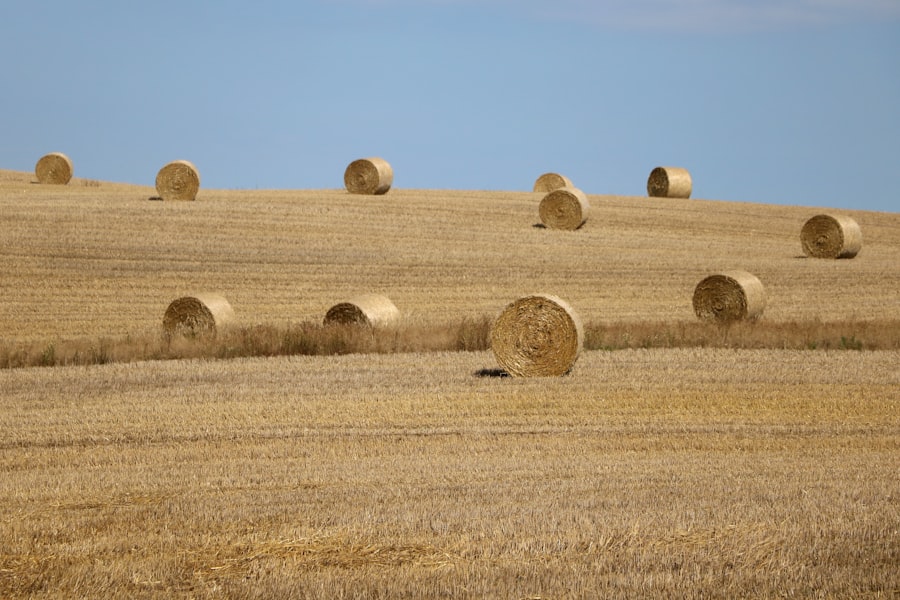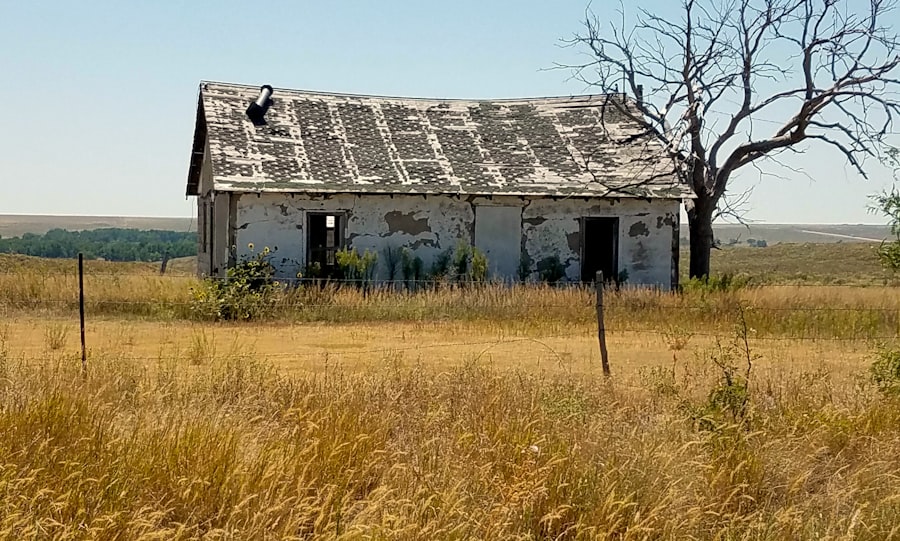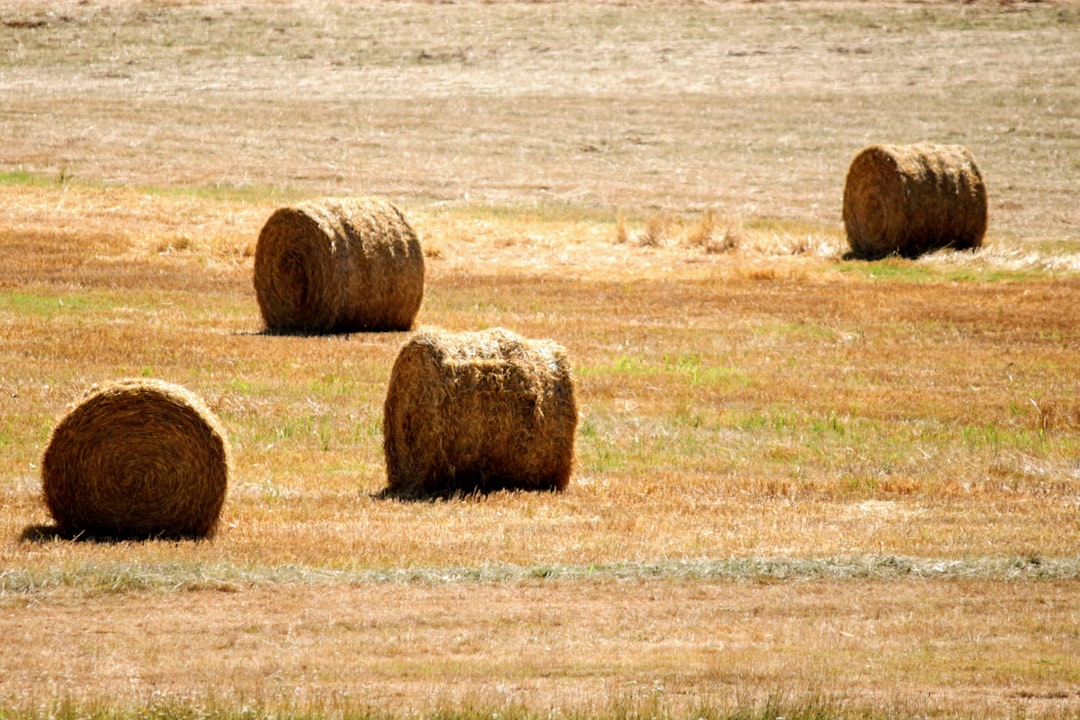The Great Plains, a vast expanse of flatlands stretching across the central United States, has long been a region characterized by its agricultural productivity and rich cultural heritage. However, in recent years, this area has faced a significant economic crisis that has left many communities struggling to survive. The crisis is not merely a result of isolated incidents but rather a culmination of various factors that have converged to create a perfect storm of economic challenges.
As the region grapples with these issues, understanding the historical context and the multifaceted nature of the crisis becomes essential for both residents and policymakers alike.
As traditional industries falter and job opportunities dwindle, the resilience of the Great Plains population is put to the test.
This article aims to explore the historical background of the region, the contributing factors to the current crisis, and the impact on agriculture, small businesses, and local economies. Additionally, it will examine government responses, employment effects, environmental implications, and community impacts while highlighting efforts toward recovery and revitalization.
Key Takeaways
- The Great Plains region is currently facing an economic crisis, impacting agriculture, small businesses, and local economies.
- Historical factors such as the Dust Bowl and decline in commodity prices have contributed to the economic challenges in the Great Plains.
- The economic crisis has had a significant impact on agriculture and farming communities, leading to financial strain and uncertainty.
- Small businesses and local economies have suffered from the economic downturn, leading to closures and job losses.
- Government response and aid programs have been implemented to support the Great Plains region, but the effects on employment and the workforce are still significant.
Historical background of the Great Plains region
The Great Plains region has a rich history that dates back thousands of years, with Indigenous peoples inhabiting the land long before European settlers arrived. Tribes such as the Lakota, Cheyenne, and Comanche thrived in this area, utilizing its resources for hunting and agriculture. The arrival of European settlers in the 19th century marked a significant turning point in the region’s history.
The Homestead Act of 1862 encouraged westward expansion by offering land to those willing to cultivate it, leading to a surge in agricultural development. As settlers transformed the landscape into productive farmland, they also faced numerous challenges, including harsh weather conditions and economic fluctuations. The Dust Bowl of the 1930s serves as a stark reminder of the vulnerabilities inherent in farming on the Great Plains.
Severe droughts combined with poor agricultural practices led to widespread soil erosion and crop failures, displacing thousands of families. This historical context is crucial for understanding the current economic crisis, as many of the same vulnerabilities persist today.
Factors contributing to the economic crisis

Several interrelated factors have contributed to the economic crisis currently plaguing the Great Plains. One significant issue is climate change, which has led to increasingly erratic weather patterns. Farmers are now facing more frequent droughts, floods, and extreme temperatures that disrupt planting and harvesting cycles.
These climatic changes not only threaten crop yields but also increase production costs as farmers invest in irrigation systems and other adaptive measures. In addition to environmental challenges, market dynamics have played a crucial role in exacerbating the economic situation. The consolidation of agricultural industries has resulted in fewer buyers for crops, leading to lower prices for farmers.
This market pressure has forced some farmers to abandon their land altogether, further contributing to the decline of rural economies.
Impact on agriculture and farming communities
| Metrics | Impact |
|---|---|
| Crop yield | Decreased due to extreme weather events and changing climate patterns |
| Livestock health | Impacted by heat stress and changing disease patterns |
| Income of farming communities | Fluctuates due to market instability and production challenges |
| Access to water resources | Diminished due to droughts and water scarcity |
The impact of the economic crisis on agriculture and farming communities in the Great Plains has been profound. As crop prices remain low and production costs rise, many farmers are struggling to make ends meet. This financial strain has led to an increase in farm bankruptcies and foreclosures, with families losing generational farms that have been in their possession for decades.
The emotional toll on these communities cannot be overstated; farming is not just an occupation but a way of life deeply intertwined with cultural identity. Moreover, as farms close or downsize, the ripple effects are felt throughout local economies. Agricultural suppliers, such as seed companies and equipment dealers, also suffer from reduced demand, leading to job losses and business closures.
The decline of farming communities threatens not only economic stability but also social cohesion, as families are forced to relocate in search of better opportunities elsewhere. This exodus can lead to a loss of community identity and support networks that have historically defined life in the Great Plains.
Decline in small businesses and local economies
The economic crisis has not only affected farmers but has also led to a significant decline in small businesses across the Great Plains. As disposable incomes shrink due to agricultural struggles, residents are forced to cut back on spending, impacting local shops and service providers. Small businesses that once thrived on the patronage of farming families are now facing unprecedented challenges, with many unable to sustain operations amid dwindling customer bases.
The closure of small businesses further exacerbates the economic downturn by reducing job opportunities within communities. As local economies contract, young people often leave in search of employment elsewhere, leading to an aging population that struggles to maintain vibrancy and innovation. This demographic shift can create a cycle of decline that is difficult to reverse, as fewer residents mean less demand for goods and services, ultimately leading to more business closures.
Government response and aid programs

In response to the economic crisis affecting the Great Plains, various government initiatives have been implemented at both state and federal levels. Programs aimed at providing financial assistance to struggling farmers have been introduced, including grants and low-interest loans designed to help cover operational costs during difficult times. Additionally, disaster relief programs have been activated in response to severe weather events that have devastated crops and livestock.
However, while these programs offer some relief, they often fall short of addressing the root causes of the crisis. Many farmers find themselves caught in a cycle of dependency on government aid rather than receiving support that fosters long-term sustainability. Policymakers are increasingly recognizing the need for comprehensive strategies that not only provide immediate assistance but also promote resilience through diversification and innovation within agricultural practices.
Effects on employment and workforce
The economic crisis in the Great Plains has had significant repercussions for employment and workforce dynamics within the region. As farms close or reduce their operations, many agricultural workers find themselves without jobs or facing reduced hours. This loss of employment not only affects individual families but also contributes to broader economic instability as spending power diminishes.
Moreover, the decline in agricultural jobs has led to increased competition for available positions in other sectors. As more individuals seek work outside of farming, local economies may struggle to absorb this influx of job seekers. The result can be higher unemployment rates and increased pressure on social services as families navigate financial hardships.
The challenge lies not only in creating new job opportunities but also in ensuring that workers possess the skills necessary for emerging industries.
Environmental and natural resource implications
The economic crisis in the Great Plains is intricately linked to environmental and natural resource challenges that have emerged over time. Unsustainable agricultural practices have contributed to soil degradation and water scarcity, further complicating efforts to revitalize farming communities. As farmers face increasing pressure from climate change and market forces, many are forced to prioritize short-term gains over long-term sustainability.
The depletion of natural resources poses a significant threat not only to agriculture but also to overall ecosystem health within the region. Water sources are becoming increasingly strained due to over-extraction for irrigation purposes, leading to concerns about future availability for both agricultural and residential use. Addressing these environmental issues requires a concerted effort from all stakeholders involved—farmers, policymakers, and community members alike—to implement sustainable practices that protect vital resources for generations to come.
Social and community impacts
The social fabric of communities across the Great Plains is being tested by the ongoing economic crisis. As families face financial hardships and uncertainty about their futures, mental health issues such as anxiety and depression have become more prevalent. The stress associated with losing one’s livelihood can lead to strained relationships within families and communities as individuals grapple with feelings of isolation and despair.
Moreover, as young people leave rural areas in search of better opportunities elsewhere, communities face challenges related to population decline and aging demographics. This shift can erode social networks that have historically provided support during difficult times. Efforts must be made not only to address economic concerns but also to foster social cohesion by creating spaces for community engagement and support systems that empower residents during challenging periods.
Efforts towards recovery and revitalization
Despite the daunting challenges posed by the economic crisis, there are ongoing efforts aimed at recovery and revitalization within the Great Plains region. Community organizations are working tirelessly to develop programs that support local businesses and promote entrepreneurship among residents. Initiatives focused on diversifying agricultural practices—such as organic farming or agro-tourism—are gaining traction as farmers seek new avenues for income generation.
Additionally, partnerships between government agencies, non-profits, and educational institutions are emerging as vital components of recovery strategies. These collaborations aim to provide training programs that equip individuals with skills relevant to evolving job markets while fostering innovation within traditional industries. By investing in education and workforce development, communities can build resilience against future economic shocks.
Lessons learned and future outlook for the Great Plains economy
The ongoing economic crisis in the Great Plains serves as a stark reminder of the vulnerabilities inherent in agricultural-based economies. However, it also offers valuable lessons about adaptability and resilience in the face of adversity. As communities navigate these challenges, there is an opportunity for transformation—one that prioritizes sustainability, innovation, and collaboration among stakeholders.
Looking ahead, it is essential for policymakers and community leaders to embrace a holistic approach that addresses both immediate needs and long-term goals. By fostering an environment conducive to entrepreneurship while promoting sustainable practices within agriculture, there is potential for revitalization that honors both tradition and progress. The future outlook for the Great Plains economy hinges on collective efforts aimed at building a more resilient foundation capable of weathering future storms while nurturing vibrant communities for generations to come.
The Great Plains economic crisis has been a topic of significant concern, affecting numerous communities across the region. This crisis, characterized by declining agricultural revenues and increasing unemployment rates, has prompted discussions on sustainable solutions and economic diversification. For a deeper understanding of the geographical and economic factors contributing to this situation, you can explore a related article on MyGeoQuest. This article provides insights into the historical context and current challenges faced by the Great Plains, offering a comprehensive analysis of the economic dynamics at play.
WATCH NOW! Why America’s Heartland Is Disappearing Fast
FAQs
What is the Great Plains economic crisis?
The Great Plains economic crisis refers to the economic downturn that has affected the Great Plains region of the United States. This crisis has been characterized by factors such as declining agricultural prices, population decline, and a lack of economic diversification.
What are the main causes of the Great Plains economic crisis?
The main causes of the Great Plains economic crisis include declining agricultural prices, which have had a significant impact on the region’s economy. Additionally, the lack of economic diversification and population decline have also contributed to the crisis.
How has the Great Plains economic crisis affected the region’s population?
The Great Plains economic crisis has led to a significant decline in the region’s population, as many residents have been forced to leave in search of better economic opportunities. This has had a negative impact on the region’s communities and infrastructure.
What are some potential solutions to the Great Plains economic crisis?
Potential solutions to the Great Plains economic crisis include efforts to diversify the region’s economy, such as investing in alternative industries and promoting entrepreneurship. Additionally, policies aimed at supporting agricultural producers and addressing population decline could also help mitigate the crisis.
